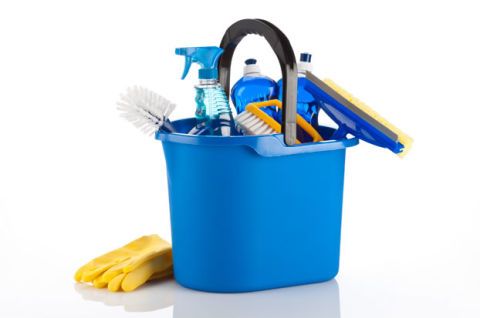
Every day, we are exposed to various environmental risks, most of which we cannot see or avoid. Harmful substances in the home can be one such invisible risk. While many of these substances are relatively harmless, others can cause significant health problems. Fortunately, there are several steps you can take to mitigate the risks posed by harmful substances in your home.
Maintaining a Clean and Safe Environment
One of the most important steps you can take is to create a safe environment for your children. Make sure all cleaning supplies and other hazardous materials are stored out of reach, and teach your children about the dangers of these substances. It is also important to keep track of what your children are putting in their mouths, as they may be more likely to ingest harmful substances if they are left accessible.
Proper Disposal
Another important step is to store and dispose of hazardous materials properly. You can minimize your risk by safely disposing of old household products; most local governments offer a recycling service that lets you drop off such items at designated locations. Make sure you familiarize yourself with the specific regulations in your area, as improper disposal can lead to environmental and health hazards.
Staying Informed
Finally, it is important to be aware of the potential risks associated with everyday activities. For example, using pesticides or other chemical products in the home can increase your exposure to harmful substances. Try to use natural alternatives or limit your exposure to these products whenever possible.
Testing Your House for Chemical Hazards
Not all harmful chemicals are intentionally used to harm others. Some substances occur naturally, while others are naturally-occurring byproducts of other processes. For example, if your house is older, there may be lead in the pipes. Other substances can enter your home through well water or even the air you breathe out of doors, bringing with them toxins that can lead to serious conditions. If you suspect your home might be full of harmful substances, there are tests you can do yourself to determine if this is the case.
The first thing you should do is contact your local health department to see if there are any regulations or advisories about certain parts of town or specific neighborhoods. You can also look online for information about the specific substances that might be present in your home. Once you have an idea of what to test for, there are a variety of kits that can help you do this yourself.
Types of Harmful Chemicals at Home
Harmful chemicals can be grouped into several broad categories. The first category covers the largest number of potentially harmful substances, including lead, radon gas, carbon monoxide, and asbestos fibers. Lead is perhaps the most well-known toxic substance; it is common in older homes built before 1978. Radon gas comes from soil and water and is the second leading cause of lung cancer in the United States. Carbon monoxide is a poisonous gas that can be emitted by malfunctioning appliances, while asbestos fibers are a known carcinogen.
The second category of harmful substances includes chemicals used in common household products, such as cleaners and detergents. These substances can cause skin irritation, respiratory problems, and other health conditions. The third category of harmful substances includes the byproducts of more natural processes, including carbon monoxide produced through heating systems and poisonous mushrooms growing in your home.
Determining Possible Chemical Exposure
One common way to test for harmful substances is through air sampling. This involves taking a sample of the air in your home and sending it to a lab for testing. If asbestos, lead, or other toxic substances are present, there will be evidence in the sample provided.
Another important way to test your home is through water sampling. Finding out what is in the water you use every day can give you peace of mind about just how clean and healthy it really is. There are also a variety of kits that can make this process easy and affordable.
Perhaps you’ve been wondering if there is asbestos in the ductwork in your home? It’s possible to test for asbestos yourself with a dust sample. Collecting samples from around the house, including from vents and fans, will give you a good idea of whether asbestos is present.
Testing your home for asbestos and other harmful substances can be a difficult and expensive process. However, it’s also necessary to ensure that your family is living in a safe environment. If testing reveals there are toxic substances in your home, you will need to take the next steps toward eliminating those substances from the environment.
By taking these simple steps, you can help reduce the risks posed by harmful substances in your home. By being aware of the dangers and taking precautions, you can keep your family safe and healthy.
Meta title: Mitigating Risks Caused by Harmful Substances at Home
meta desc: Your home should be a safe haven for your loved ones. But come harmful chemicals can pose risks to your family’s health and safety. Read on to learn more.
 Make Your Child’s Visit to the Dentist’s Office Enjoyable
Make Your Child’s Visit to the Dentist’s Office Enjoyable  Mastering Online Masterclasses: Choosing the Right Online Violin Instructors
Mastering Online Masterclasses: Choosing the Right Online Violin Instructors  Empowering Healthcare Professionals: How WT Farley Oxygen Regulators Enhance Patient Care
Empowering Healthcare Professionals: How WT Farley Oxygen Regulators Enhance Patient Care  Elevate Your Collection: Unveiling the Beauty of Custom Wine Cellars in Ottawa
Elevate Your Collection: Unveiling the Beauty of Custom Wine Cellars in Ottawa  Enhancing Your Online Presence with Real Estate SEO Services
Enhancing Your Online Presence with Real Estate SEO Services  The Epitome of Luxury: Elevating Spaces with Imperial High-End Kitchen Cabinets
The Epitome of Luxury: Elevating Spaces with Imperial High-End Kitchen Cabinets  Pokémon go accounts- Exploring the reasons behind player demand
Pokémon go accounts- Exploring the reasons behind player demand  Pokemon go shortcut to greatness – Buy now
Pokemon go shortcut to greatness – Buy now  Online slot games for classic fruit machine lovers
Online slot games for classic fruit machine lovers 



